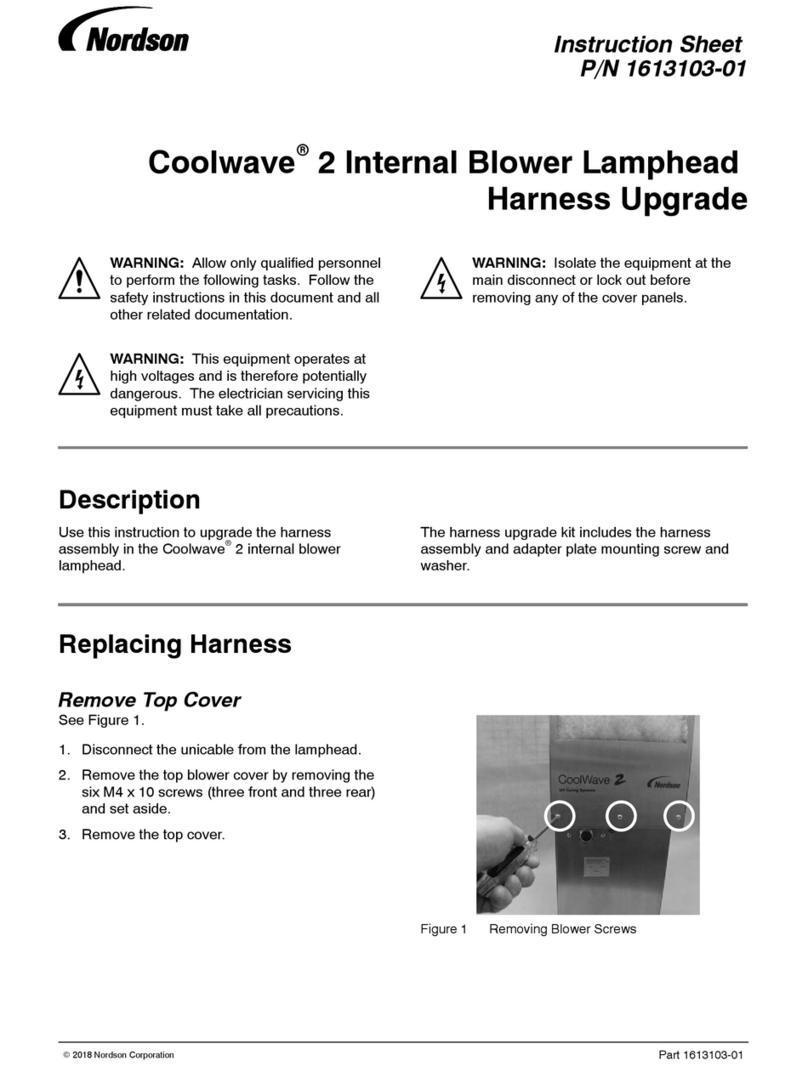
Table of Contents
ii
Part 123456X E2002 Nordson Corporation
Manual XX-XX
Installation 3-1..............................................
Introduction 3-1.............................................
Inspection and Packaging 3-1.................................
Power Supply Installation 3-1.................................
Mounting Guidelines 3-1...................................
Power Supply Electrical Connections 3-3.....................
Power Connections 3-3..................................
Power Supply Balancing 3-4.............................
Network Connections 3-6..................................
Remote I/O Inputs and Outputs 3-6..........................
Machine Stop Interlock 3-8...............................
Remote Power Level Control 3-8.........................
Idle Mode 3-9..........................................
Remote Standby and Lamp On 3-9.......................
Rapid Cycle Using Idle Mode 3-10.........................
DeviceNet Installation 3-10..................................
Chassis Isolation 3-10....................................
BUS Power 3-10.........................................
Hardware Specifications 3-11.............................
Software Specifications 3-11..............................
Lamphead Installation 3-11....................................
Mounting Guidelines 3-11...................................
Light Shielding 3-11........................................
Internal Blower 3-12........................................
External Blowers −Cooling Air 3-12..........................
Cooling Exhaust Air −Lamphead/Chamber Cooling Air Removal ....
3-12
Monitoring Static Pressure 3-15..............................
Top/Front Pressure Port 3-15..............................
Bottom Pressure Port 3-15................................
Switching Pressure Ports 3-16.............................
Lamphead Cable Connections 3-17..........................
RF Detector Installation 3-18...................................
Power Supply Configuration 3-19...............................
Operation 4-1...............................................
Introduction 4-1.............................................
Display and Controls 4-1.....................................
Additional Functions 4-3...................................
Temperature 4-3........................................
Light Detector 4-3......................................
Starter Bulb Test 4-3....................................
Panel Lock 4-3.........................................
Display Messages 4-4.......................................
Fault Messages 4-4..........................................
Resetting Faults 4-5.......................................
Startup 4-6.................................................
Locally Operated Units 4-6.................................
Remotely Operated Units 4-8...............................
Shutdown 4-9...............................................





























